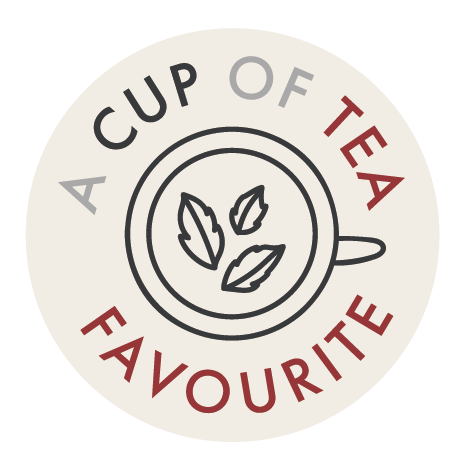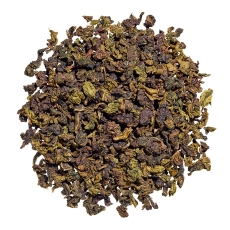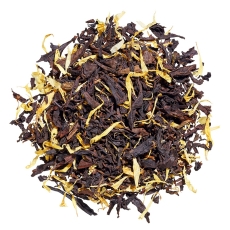Flavoured Oolong
Flavoured Oolong
The Unique Qualities of Oolong Tea
Oolong teas have an amazing complexity in taste, aroma and appearance. Leaf colour and brewed tea can vary from dark-coffee brown to amber-orange, golden-yellow, and beyond. Many people have heard of oolong tea, but few can define it. Oolong teas can be either partially oxidised, a lighter processing style that makes it resemble a green tea, or heavily oxidized, giving them the taste, look and feel of a black tea.
Oolong tea is made using partially-oxidised leaves, which means its character varies according to the degree of fermentation. For example, light oolong teas like our Oolong Ti Dung have a delicate, flowery taste, while a variety like China Superior Fancy Oolong Organic much more like black tea.

Harvesting and Production
Oolong teas undergo more individual steps in processing than any other tea type, including withering, oxidising, special leaf bruising, rolling, more oxidation (in some types) and repeated firing or roasting to lock in aromas and flavours.
During the withering step, the tea leaves are lightly bruised by shaking or rolling them, which allows the edges to begin oxidizing. The leaves are then rolled to continue the oxidation. The rolling stage is sometimes interrupted intermittently with pan firing to halt the oxidation temporarily. This alternation between rolling and heating is often repeated many times to develop the layers of flavour for which oolongs are so famous.
Depending on the type of oolong being made, sometimes no further oxidation is needed, such as in the case of a Pouchong. For oolongs that require greater oxidation like a Da Hong Pao (Big Red Robe) and Bai Hao (Oriental Beauty), the rolled leaves are left to rest, usually on large bamboo trays, for a period of a few hours. A final drying is done by pan firing, which stops the oxidation and reduces the moisture content. These oolongs all have a long lovely twisted leaf shape.
All of the above painstaking steps are carefully monitored by the tea master, who decides when the leaves are to be moved to the next level of production. To make those decisions, the master must rely primarily on the aroma of the leaves, a skill learned over time. Some of these tea masters can simply tell by the smell and aroma of the leaves when to move to the next step.
Some oolongs, such as the famed Tung Ting (Dong Ding) and Tie Guanyin (Ti Gian Yin or Tie Kuan Yin), go through an extra step: The leaves are collected in a canvas bag, the bag is tightly gathered into a sphere the size of a bowling ball, and then the bag is repeatedly rolled by hand, by foot or using a machine. The leaves are removed from the bag, briefly heated in a tumbling machine, and then returned to the bag and rolled again. This might be done up to thirty times. The process shapes the leaves into small balls and adds a wonderful depth of flavour to the cup. A final drying is done by pan firing, which stops the oxidation and reduces the moisture for future storage.
In some cases, the semi-balled, lightly oxidized finished tea that is defined as jade oolong is lightly baked in a low oven for more depth of taste and a typically slightly toasted finish. This changes the classification from a jade oolong to an amber oolong. One has to be careful not to confuse amber oolong with any type of oolong. The word amber oolong is also used for any oolong that is more than 25% oxidized. To summarise, amber oolongs have either been treated to an additional baking process or are darker due to a longer oxidation time.
History of Oolong Tea

First produced in the Fujian province of China, some 400 years ago, oolong tea now comes primarily from Taiwan and southern China. Its long, dark leaves, redolent of dragons' tails, are what give oolong tea its Chinese name: ‘Wu Long', meaning ‘black dragon'.
Oolong originates in China but many varieties are now produced in Taiwan. Tea plants used to manufacture just about any tea can also be used to produce oolong, but the special processing used is considered a high-art form with mastery of this skill taking many years to perfect.
Some of China’s oolongs are collected like expensive bottles of wine by collectors and connoisseurs. The high mountain Taiwanese oolongs such a Jade Oolong are bought, sold and collected like exotic single-malt whiskey’s and rare artwork.
Global demand for Oolong is increasing but, with limited production, prices are likely to rise further.
How to Brew Oolong Teas
Keep in mind that Oolongs in particular can differ significantly so please treat this as a guide.
It’s worth experimenting to find the way you like it best!
Always use freshly boiled water and allow it to cool a little before making your tea.
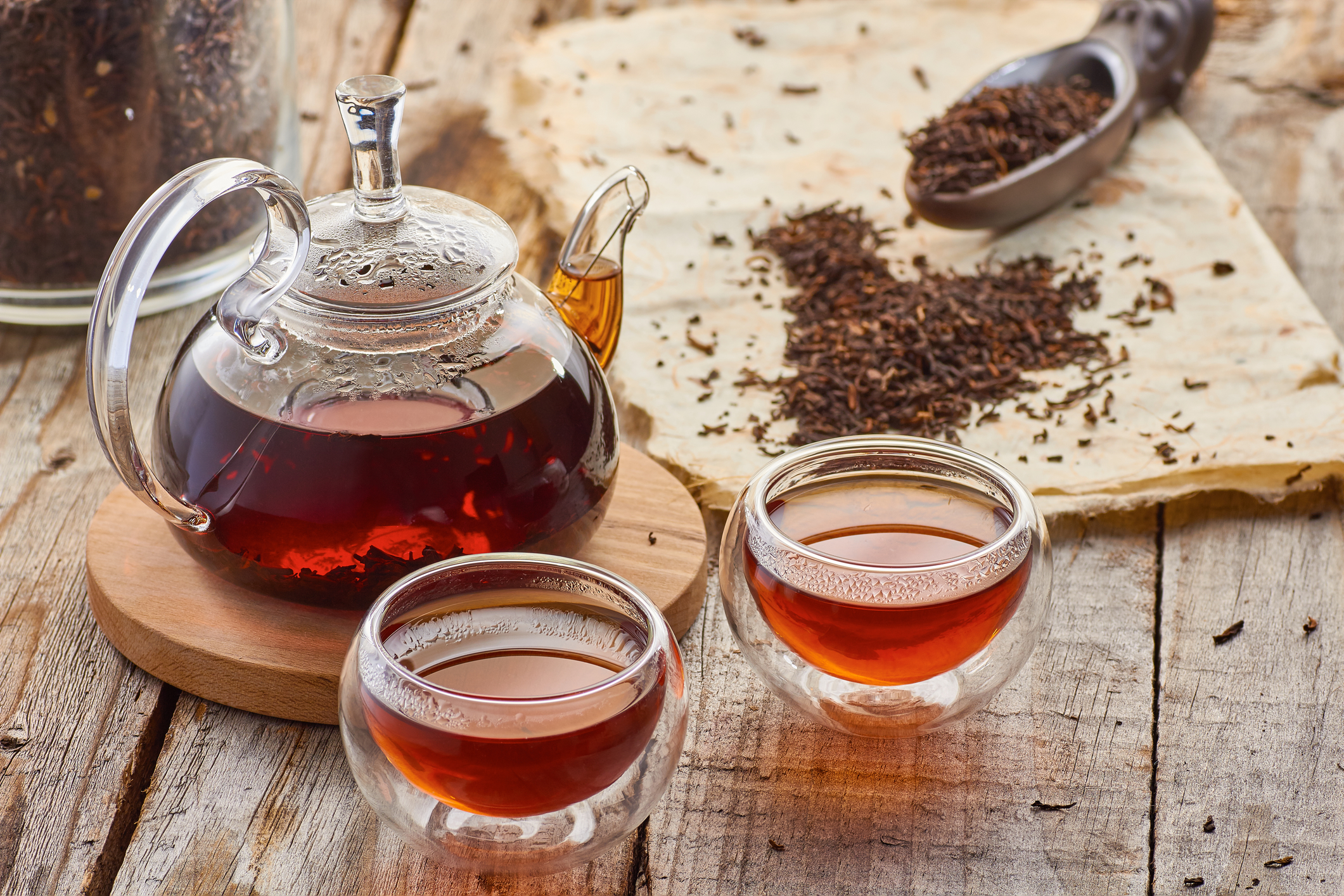
Brewing Oolong Tea:
- Boil fresh water and leave to cool slightly.
- Place your oolong tea in a tea strainer or infuser
- Pour the freshly cooled hot water over the tea
- Steep the tea for the appropriate amount of time
- Strain the tea
- Sit back, relax and enjoy!
Brewing Table
 One level teaspoon to one heaped teaspoon
One level teaspoon to one heaped teaspoon
 2 - 5 minutes
2 - 5 minutes
 A wide range of colours including Golden Yellow, Yellow - Green, Amber, Red Golden, Golden Brown & Pale Brown
A wide range of colours including Golden Yellow, Yellow - Green, Amber, Red Golden, Golden Brown & Pale Brown
NOTE: Please make sure to read the individual brewing instructions on each package of tea.
The most varied and complex of all tea types, oolong teas are regarded as some of the most exciting teas of all.
Our Oolong Tea favourites are below:
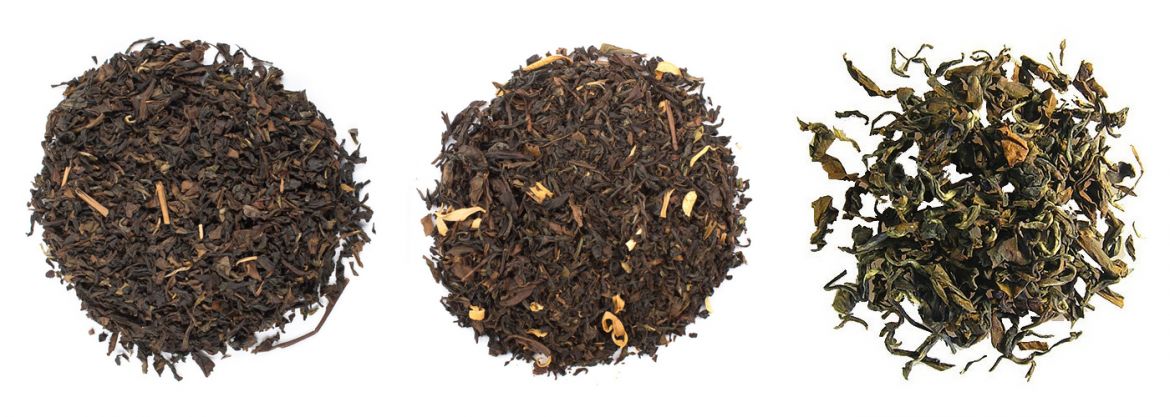
Ronnefeldt Oolong Ronnefeldt Orange Blossom Oolong China Superior Fancy Ooolong Organic
- Ronnefeldt Oolong - Semi-fermented Oolong tea from Formosa with a slightly tart taste to begin with followed by its characteristic nutty sweetness to finish.
- Ronnefeldt Orange Blossom Oolong - A flavoured blend of black tea with a soft, semi-fermented Oolong blended with the fresh taste of oranges and orange blossoms to create this lively fruity Oolong blend.
- China Superior Fancy Oolong Organic- Fancy means superior and this is true to this tea. It is a darker, more oxidized version of Oolong. Fancy Oolongs are rare and only a few cases are coming to the market each year. It comes with an elegant, flowery and highly aromatic character that also reminds of nut and fruit





 EARN POINTS WITH OUR LOYALTY SCHEME
EARN POINTS WITH OUR LOYALTY SCHEME
